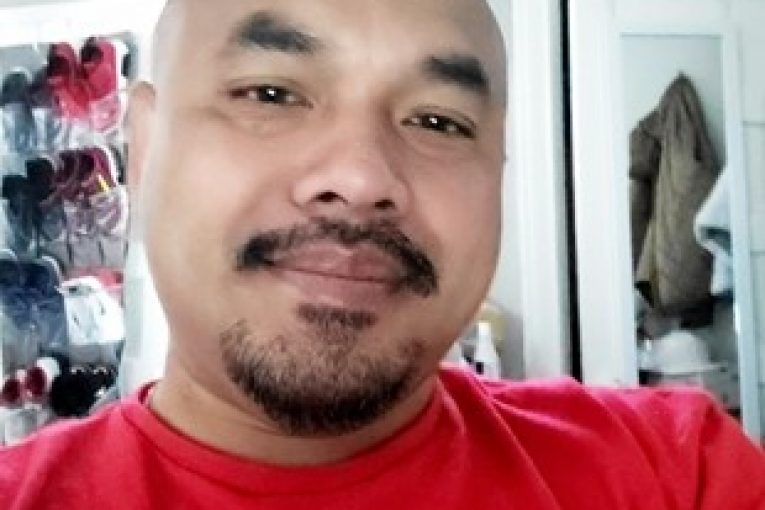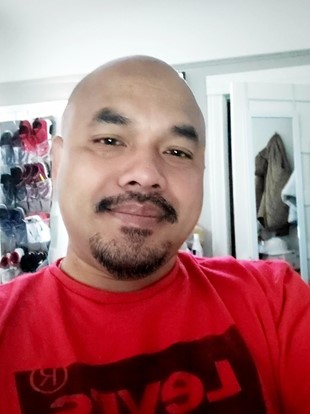

By Mia Machado
SAN FRANCISCO, CA – As COVID-19 ripped through California’s San Quentin State Prison, the words “Man down! Man down!” echoed through the halls.
Chanthon Bun knew something was wrong, but could not trust the CDCR to keep him safe, charging, “What they were telling us and what we were watching on the news were two different things.”
Bun, 41, was released from San Quentin State Prison in July after serving 23 years for an armed robbery committed when he was 18. As a Cambodian refugee, Bun and his family fled Cambodia during the Khmer Rouge genocide of the 1970s and eventually resettled in Los Angeles.
In an episode of the KALW Radio series “Uncuffed,” Bun described how, like other young refugees, growing up in a traumatized community with no mental health care led to the abuse of alcohol and joining a gang.
However, on Feb. 28, 2020, after more than two decades in state prison, Bun went in front of a parole board and gained his freedom.
As he awaited his release, Bun tried to do what he claimed the CDCR would not: seek protection from a spreading COVID outbreak that would infect over 2,200 of the prison population and eventually kill 28.
Bun contracted the virus with just five days remaining in his sentence.
After living through the outbreak at San Quentin, Bun expressed that he believes the CDCR “really killed a lot of people because of their lack of understanding of this disease, and lack of  just caring for people.”
just caring for people.”
When COVID-19 cases began to spread across California, Bun said that the CDCR did very little to educate the incarcerated population about how to stay safe.
On the bulletin boards located on the first tier of the building, posters advised the men to remain 6 feet apart. “There’s not even six feet in our cells,” Bun said.
As fear spread across the prison, Bun explained that older, and often immunocompromised men began to prepare for the inevitable.
“A lot of us started making our own masks, like me, I had a mask from the Northern California fires that they gave us.” Others put signs on the front of their cells asking other incarcerated individuals to keep distance out of respect.
The prison began supplying cleaning supplies which included a roll of toilet paper, a bar of soap, and a diluted cleaning agent.
“They would dilute it in a big trash can. You had to have your own bottle, whatever bottle you had, and that would last you for a whole week to clean your surroundings,” he said. When people asked to receive extra cleaning supplies, they were denied. “They weren’t budging on that,” Bun explained.
Bun discussed the difficulty of keeping himself safe, even from the correctional officers. At least four times a night, officers walk up to each cell to make sure everyone is still there.
He shared that most officers didn’t wear masks. “The best thing you could get them to do is put the mask on their chin,” he said.
When Bun covered the back of his bunk with a towel to create a barrier from respiratory droplets, the officers threatened to write him up despite expressing his concerns about the virus.
“I can’t afford a write up while they’re reviewing my parole,” Bun said, “he left me in a place where when he walks by, he’s breathing inside my cell.”
While a lack of transparency persisted, Bun began to notice their regular officers being transferred out and new younger officers taking their place. It was clear “they know what’s going on, [and] we don’t.”
Despite the outbreak, Bun asserted that San Quentin did little to prevent excessive interactions. For meals, the men had to stand in long lines in front of the bottom tier’s cells. To shower, Bun explained that 100 men were allotted one hour to shower under 20 shower heads.
“Everyone wanted their shower so everybody’s sitting in the shower waiting. When you shower, everyone takes off their mask,” he said.
When they started testing people to discover the extent of the outbreak, many refused to get a test. Bun himself expressed weariness over the way they were administering the test. “We did not trust the CDCR period,” he said.
The men began to understand that if you tested positive, you would be placed in solitary confinement as a method of isolation.
“That’s why if they could take it, (being sick), they didn’t want to go tell them. All we knew is that if there’s COVID they’re locking us up,” he said.
As Bun reflected, he admitted to understanding the hesitancy to confess to being sick.
“Even though we’re in prison, who wants to die alone,” he explained, “even though I didn’t have my family members around, I had people I knew for years around me, people that at least I know care for me.”
“If I was locked up in solitary confinement who cares for me? I’m going to die alone,” he added. When Bun started showing signs of COVID-19, hoping to “at least die outside of the prison somewhere,” he decided not to tell the CDCR.
On the day he was paroled, he went to say goodbye to his friends, explaining that “usually when one of us paroles after so long, we hug each other and we say good luck.” But when he visited their cells, “they couldn’t get out of bed, they were sick.”
“It’s that hopelessness feeling like we’re gonna die, we can’t talk to our families, the letters may or may not be getting out there, and they’re just leaving us here to die,” Bun explained.
Once released, Bun tested positive for COVID-19. The CDCR only provided the option for Bun to move into a transition home. However, they would not take him because he was positive for the virus. “CDCR didn’t have a plan for me to go anywhere,” Bun explained.
The community stepped in to support Bun, providing round the clock support, food, and medical attention. “Sometimes they stood outside the house because I was getting worse,” he said.
Since recovered, Bun still suffers from COVID toe and nerve pains. Months later, he still feels the fatigue from the virus he caught in San Quentin. Bun testified in the California Assembly about the COVID-19 outbreak, to relay that San Quentin “never took care of us, you were waiting for us to die like you always do.”
The CDCR for San Quentin declined an interview but provided a link to their website that details the actions they say are in place to address the COVID-19 pandemic. Their website ensures that “the health and safety of the incarcerated population and staff continues to be our top priority.”
Back in June, San Quentin State Prison received California’s largest penalty yet for workplace safety violations contributing to the spread of COVID-19. After a June inspection by regulators from the Division of Occupational Safety and Health, the prison faced a $421,880 fine.
As county jails and prisons continue to face unique obstacles in stopping the spread of COVID-19, some District Attorney’s offices are doing their best to curb the crisis.
The San Francisco District Attorney’s office, for example, has worked tirelessly to try to reduce the jail and prison populations.
Rachel Marshall, director of communications and policy advisor for the office, explained that the SF DA’s office was able to facilitate a significant reduction in the jail population by roughly 40 percent.
“One of the primary things that DA Boudin emphasized in response to the pandemic was keeping not only those working in the office safe, but also keeping people who are housed in jail safe as well. We did this through partnership with pretrial services, the public defender’s offices, the sheriff, and other justice partners, and we were able to significantly reduce the jail population to prevent an outbreak in the jail,” she said.
San Francisco Assistant District Attorney Julia Gonzales worked with the office on reviewing some of the cases where people had been convicted in San Francisco and were serving their time in San Quentin.
At the outset of the pandemic, aware of the particular risk of a COVID-19 outbreak in prisons and jails, the San Francisco District Attorney’s Office began proactively reviewing cases in every prison across the state to determine those individuals who, if resentenced, could be safely transitioned back into their communities.
So far the office has successfully petitioned for the resentencing and release of 48 people, as well as an additional 18 who have been found to be suitable for release based on our advocacy at lifer parole hearings.
 Mia Machado is a junior at UC Davis, currently majoring in Political Science-Public Service and minoring in Luso-Brazilian studies. She is originally from Berkeley, California
Mia Machado is a junior at UC Davis, currently majoring in Political Science-Public Service and minoring in Luso-Brazilian studies. She is originally from Berkeley, California
To sign up for our new newsletter – Everyday Injustice – https://tinyurl.com/yyultcf9
Support our work – to become a sustaining at $5 – $10- $25 per month hit the link:




